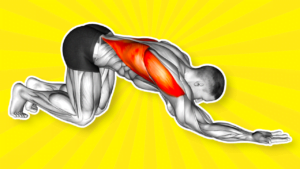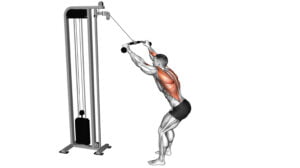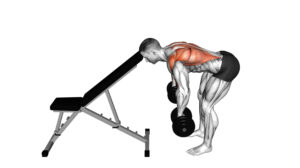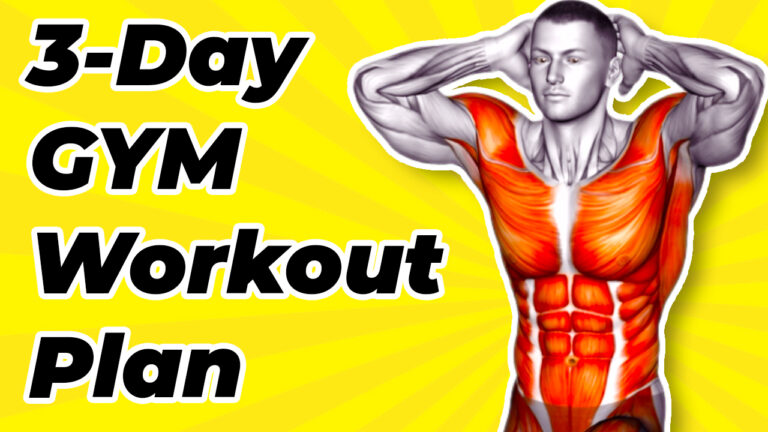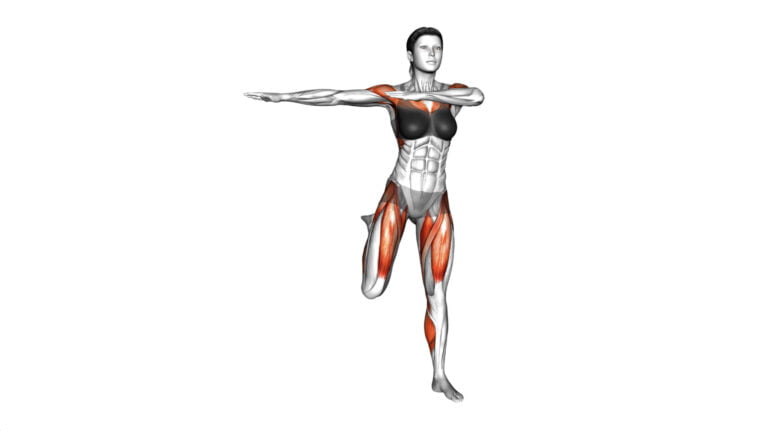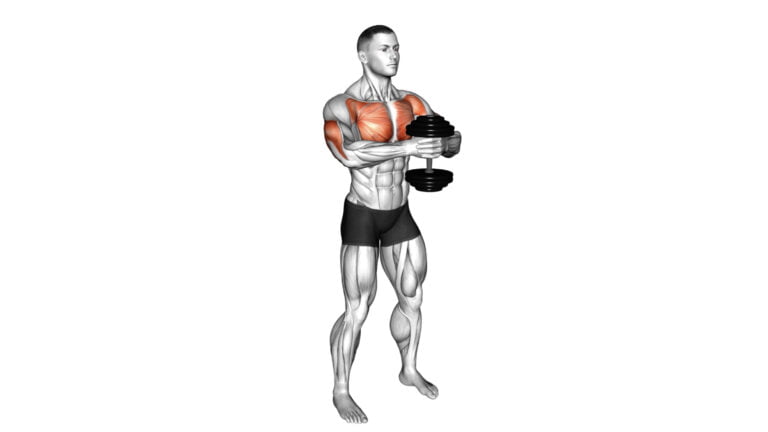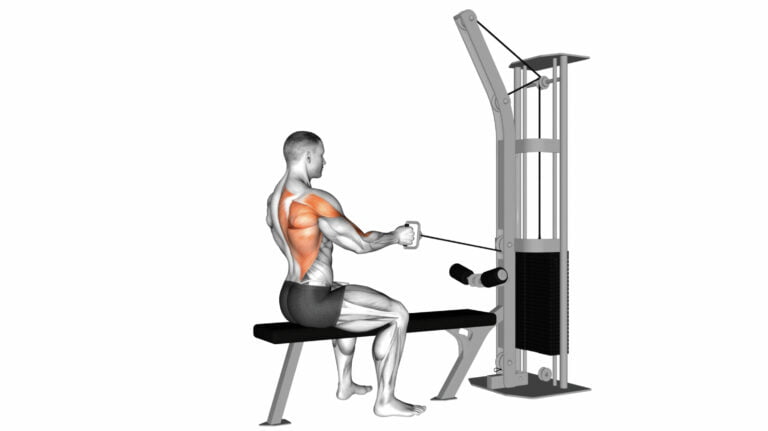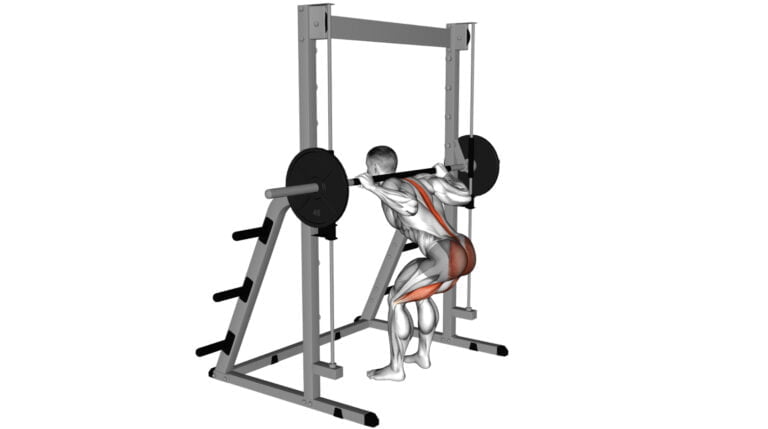10 Effective Vertical Pull Exercises To Strengthen Your Back And Lats
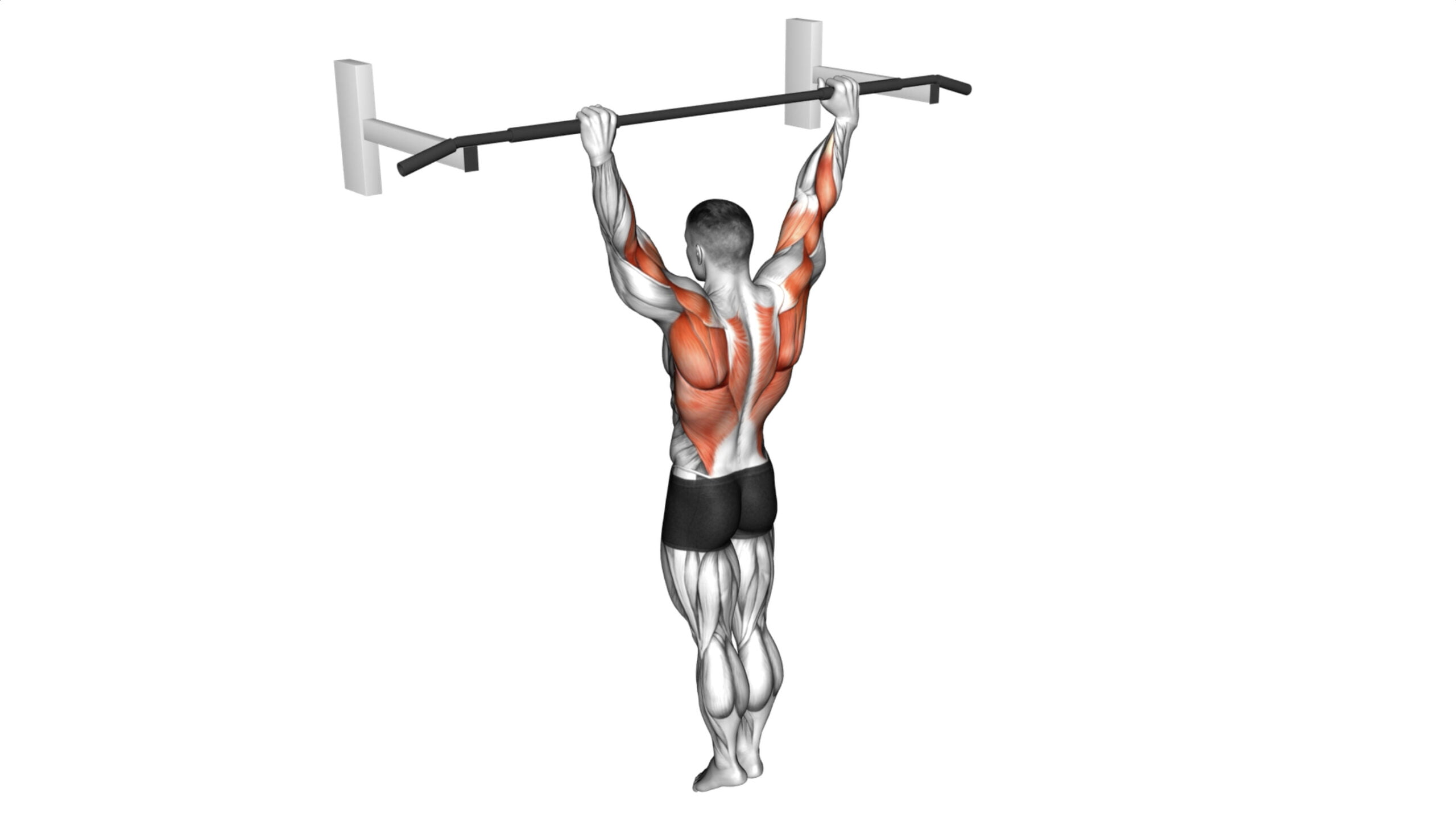
If you’ve ever found yourself hunched over a desk or feeling the nagging ache in your back after a long day, it’s time to introduce vertical pull exercises into your routine. With my years of experience as a strength and conditioning coach, I can vouch for the transformative power these moves have on building muscular backs and sculpted lats.
Vertical pulls aren’t just about aesthetics; they’re crucial for functional strength and injury prevention.
Vertical pull exercises are the cornerstone of a balanced workout regimen that fortifies your upper body against everyday strains. They help correct posture by retraction of shoulder blades and activate the mighty latissimus dorsi – the broadest muscle in your back responsible for arm movements such as adduction, extension, and internal rotation.
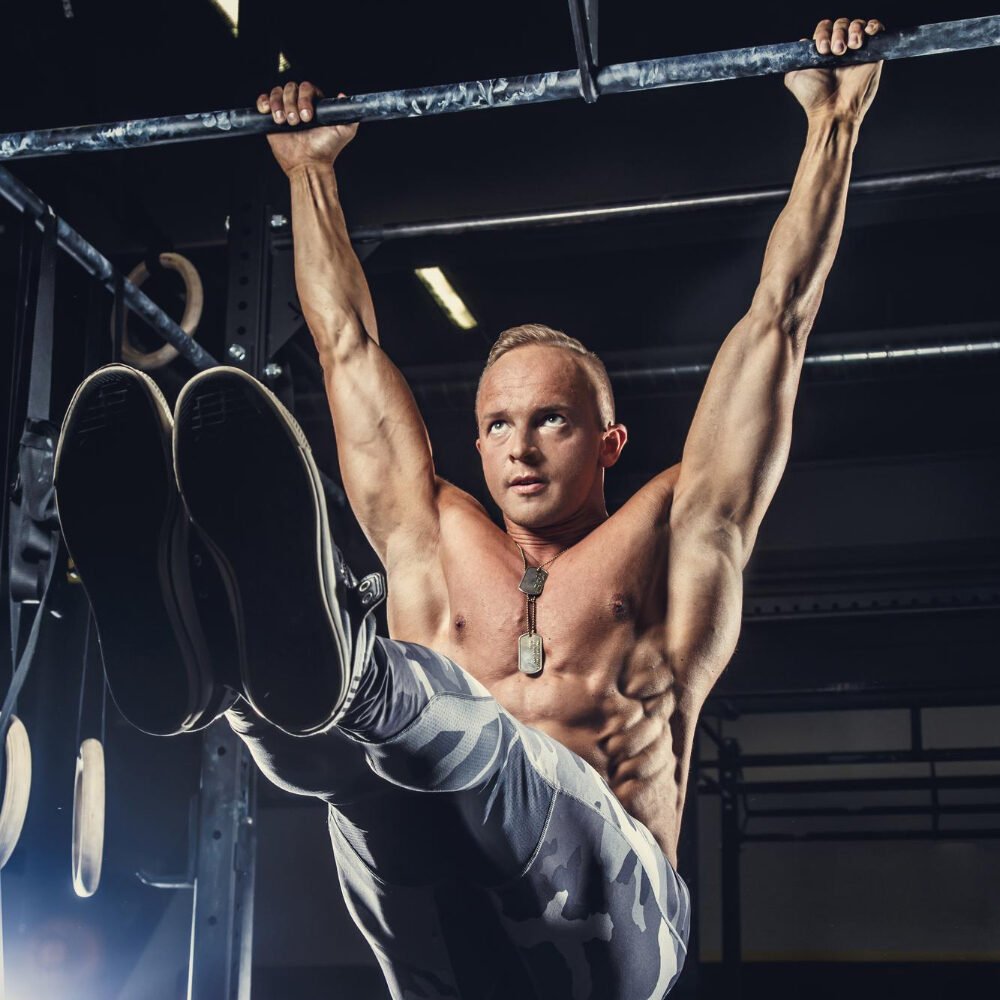
Keep reading to uncover ten potent variations that promise not only to enhance muscle growth but also to revitalize your whole physique. Get ready to elevate your fitness game!
Key Takeaways
- Vertical pull exercises like the Archer Pull-up and Corn Cob Pull-up are powerful tools for building back strength and correcting posture.
- Engaging in a routine of vertical pulls, including variations such as Chin – Ups or Cable Bar Lateral Pulldowns, can enhance upper body stability and muscle endurance.
- Exercises such as Band Knelling Lat Pulldown offer customizable resistance, making them suitable for both beginners and advanced athletes to strengthen their lats and improve muscle definition.
- Incorporating different grip techniques, such as in Cable Neutral Grip Wide Pulldown or with Mag Grips, provides diversity in workouts which helps prevent muscle imbalances and workout boredom.
- Proper form is crucial when performing any vertical pull exercise to maximize effectiveness and prevent injury; consistently practicing these exercises will contribute significantly to overall back health.
Benefits of Vertical Pull Exercises
Vertical pull exercises offer a range of benefits, including improved back strength, better posture, and versatility in workouts. By engaging the muscles in your back and lats, these exercises can help you build overall upper body strength and stability.
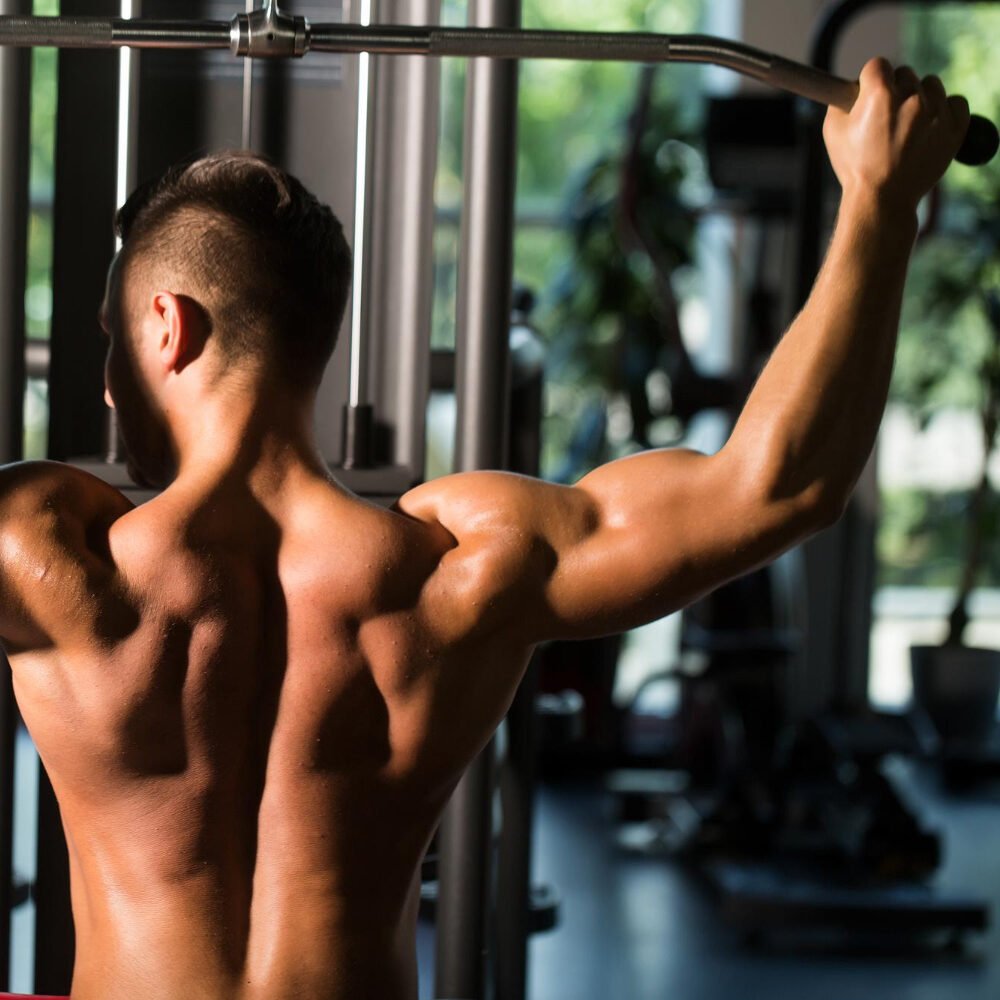
Improved back strength
Engaging in vertical pull exercises like the Archer Pull-up or the Corn Cob Pull-up can lead to a significant boost in back strength. These movements put your lats and rear delts to work, building muscle fibers critical for holding your spine erect and supporting a stronger core.
Strengthening these muscles not only aids with heavy lifting but also contributes to better stability during other workouts.
Pull-ups and their variants are classic examples of compound exercises that engage multiple joints and muscle groups simultaneously, maximizing efficiency in your strength-training regimen.
By performing Chin-Ups, you’re effectively targeting the biceps brachii while also enhancing grip strength—all essential for a powerful upper body. Band Knelling Lat Pulldowns offer a customizable resistance challenge, perfect for those at any stage of their fitness journey looking to fortify their back muscles further.
Better posture
Practicing vertical pull exercises goes beyond strengthening your arms and back. It helps sculpt a better posture, which is key for looking confident and staying healthy. Engaging in these movements targets muscles responsible for keeping your shoulders blades back and spine straight.
This alignment reduces the risk of shoulder pains and can prevent injuries that stem from slouching or hunching over.
A consistent routine of chin-ups, lat pull-downs, or any similar exercise pulls your upper body into its natural upright position. Stronger back muscles support your torso, making good posture effortless throughout the day.
This improved stance isn’t just about standing tall; it elevates athletic performance by allowing more efficient movement patterns during physical activity. Next up, discover how to add variety to your workouts with these exercises!
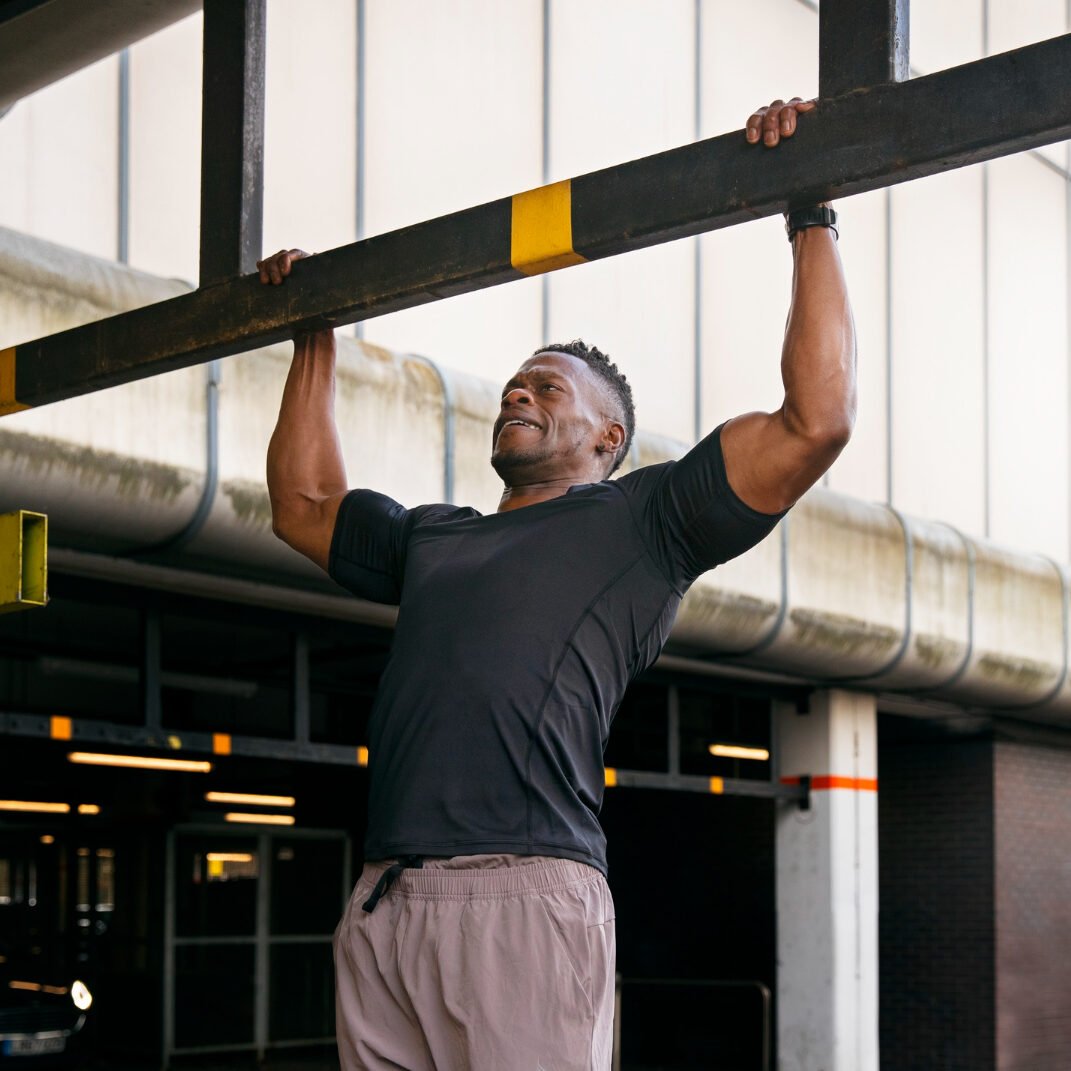
Versatility in workouts
Vertical pull exercises stand out for their ability to engage different muscle groups, making your workouts diverse and balanced. With numerous grip variations—pronated, supinated, or neutral—you can challenge your back and lats in unique ways every session.
These changes not only target specific muscles for more defined strength but also keep your routine fresh and exciting. Whether you’re at a gym with access to cable machines and pull-up bars or working out at home with resistance bands, these exercises adapt to your environment.
Mixing things up prevents muscle imbalances and reduces injury risks while bolstering muscle endurance and functional strength. Such versatility ensures that whether you aim for hypertrophy or overall upper body stability, vertical pulls have got you covered.
Now let’s dive into the 10 effective vertical pull exercises that will revolutionize your back training regimen.
10 Effective Vertical Pull Exercises
1. Archer Pull-up
The Archer Pull-up is a challenging vertical pull exercise that specifically targets the back and lats. This exercise involves pulling your body up towards one side while keeping the opposite arm straight and extended, creating an external rotation at the shoulder joint.
By doing this movement, you can increase strength and stability in your back and lats, helping to improve muscle imbalances and overall athletic performance when performed correctly.
It’s essential to note that the Archer Pull-up requires a high level of shoulder and arm strength, so it’s crucial to progress gradually while using proper form to avoid overexertion or injury.
2. Corn Cob (Side to Side) Pull-up
The Corn Cob (Side to Side) Pull-up is a targeted exercise that engages the back and lats. By pulling the body up to one side and then the other, this movement helps improve strength and muscle definition in these areas.
It requires both upper body strength and core stability, making it an effective exercise for overall back and lat development. Whether using a pull-up bar or resistance bands, incorporating this technique into a vertical pull workout routine can lead to increased strength in the back and lats.
Next up, let’s explore the benefits of adding Chin-Ups to your workout routine.
3. Chin-Up
Moving on from the lateral movement of the Corn Cob (Side to Side) Pull-up, let’s focus on the classic and powerful Chin-Up. This exercise is a staple for building upper body strength and targeting the lats and biceps.
By gripping a pull-up bar with your palms facing towards you and hands shoulder-width apart, you engage multiple muscle groups as you lift your body upward using mainly your arms.
Engage your back, shoulders, biceps, and forearms during each controlled movement. Focus on pulling yourself up until your chin reaches or surpasses the level of the bar while maintaining proper form throughout.
4. Band Knelling Lat Pulldown
The Band Kneeling Lat Pulldown is a beneficial exercise for strengthening the lats and back muscles. By utilizing a resistance band attached to an overhead structure while kneeling, individuals can effectively engage their upper body muscles.
As they pull the band down towards the chest, this exercise works to enhance both upper body strength and muscle definition in the back and lats.
This exercise is particularly useful for those seeking to improve their overall back strength and achieve greater muscular definition in this area. The Band Kneeling Lat Pulldown provides a versatile option for integrating resistance training into workout routines, offering an effective way to target specific muscle groups within the back and upper body.
5. Cable Bar Lateral Pulldown
The Cable Bar Lateral Pulldown targets the lats, biceps, and shoulders. Perform this exercise by sitting at a cable machine with a wide bar attachment and pulling the bar down to chest level.
Remember that proper form and control of movement are crucial for engaging the targeted muscles effectively. This exercise can be combined with other vertical pull exercises for a comprehensive back and lat workout, leading to improved strength, muscle definition, and overall back and lat development.
In addition to the Cable Bar Lateral Pulldown, there are several effective exercises that can contribute to your back strength training routine. The Band Knelling Lat Pulldown offers an alternative approach to targeting similar muscle groups while also incorporating variety into your workout plan.
6. Cable Cross-over Lateral Pulldown
Using a cable machine, perform the Cable Cross-over Lateral Pulldown to effectively target your back and lats. This exercise involves a lateral pulldown motion and can be varied by using different grips and attachments for added diversity in your workout routine.
Incorporate this exercise into your comprehensive back and lats training plan as it provides an effective way to strengthen these muscle groups.
To engage in the Cable Cross-over Lateral Pulldown, adjust the cable machine accordingly, select an appropriate attachment or grip, maintain proper form throughout the movement, and focus on controlled repetitions to maximize its benefits as part of your strength-building regimen.
7. Cable Close-Grip Front Lat Pulldown
The Cable Close-Grip Front Lat Pulldown mainly targets the latissimus dorsi muscles. Engaging in this exercise also works the biceps, rhomboids, and lower and middle trapezius muscles.
The movement involves sitting at a cable machine and pulling a bar down to chest level. This workout contributes significantly to enhancing overall upper body strength while simultaneously promoting better posture and reducing the risk of injury.
Correct form is essential for optimizing effectiveness and preventing strain on the muscles.
8. Cable Lateral Pulldown with Mag Grip
Transitioning from the Cable Close-Grip Front Lat Pulldown to the Cable Lateral Pulldown with Mag Grip, this exercise introduces a unique attachment – the Mag Grip, which provides an alternative hand position and grip for performing pulldowns.
This variation targets the lats, shoulders, and upper back muscles by utilizing a cable machine. It is deemed effective in enhancing strength and muscle definition in these areas, offering a fresh challenge to prevent workout plateaus.
9. Cable Neutral Grip Wide Pulldown
The Cable Neutral Grip Wide Pulldown is a fantastic exercise for strengthening the back and lats. Using a cable machine with a neutral grip handle, this exercise offers an effective way to target the lats and upper back muscles.
The neutral grip position facilitates a more natural movement, helping to engage the targeted muscle groups efficiently.
Additionally, using this variation can be beneficial for individuals seeking to add variety to their vertical pull routine and further develop their overall back strength. It’s also an excellent option for those who may experience discomfort or strain with other grip positions during wide pulldowns.
10. Cable Parallel Grip Lat Pulldown on Floor
Perform the Cable Parallel Grip Lat Pulldown on the floor to target your lats and upper back muscles effectively. Utilize a cable machine with a parallel grip attachment while kneeling on the ground to execute this exercise.
By isolating the lats, you can achieve a full range of motion, which aids in building strength and muscle definition in your back. Incorporating this lat pulldown into your vertical pull workout routine contributes to overall improvements in back strength and stability.
Remember that proper form and technique are crucial for maximizing effectiveness while preventing injury.
Incorporating a Cable Parallel Grip Lat Pulldown on Floor also helps create variation within your vertical pull exercises, providing comprehensive development for your back muscles.

Tips for Doing Vertical Pull Exercises
– Ensure proper grip orientation and stance to effectively target the back and lats during vertical pull exercises.
– Recommended sets and reps can vary, but starting with 3-4 sets of 6-12 reps is a good guideline. Incorporating vertical pulls into a workout routine can help improve overall upper body strength and muscle definition.
Proper grip orientation and stance
Maintain a firm and secure grip on the pull-up bar, with your hands slightly wider than shoulder-width apart for traditional pull-ups. For chin-ups, use an underhand grip with your hands positioned closer together.
Engage your core muscles and keep your body straight from head to heels during vertical pull exercises to ensure stability and maximize muscle engagement.
Your stance should be stable yet comfortable, with feet firmly planted on the ground about hip-width apart. Keep your chest up and shoulders pulled back to maintain good posture while performing vertical pulls.
Recommended Sets And Reps
Start with 3 sets of 8-12 reps for beginners to build a foundation. As strength improves, gradually increase weight and reduce reps. For advanced lifters, focus on higher sets and lower reps to enhance strength and muscle mass.
Tailor your sets and reps based on individual fitness levels and goals. Adjust as you progress to continue challenging your muscles effectively.
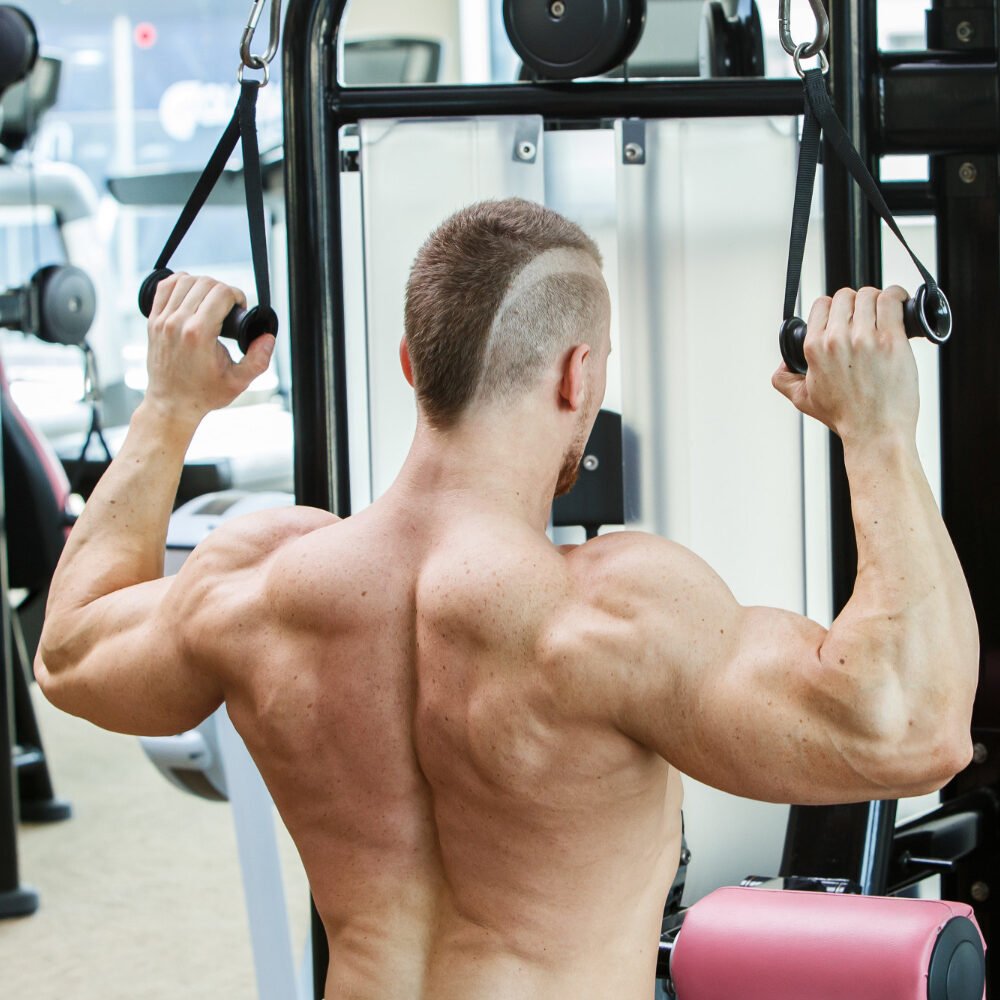
Incorporating vertical pulls into a workout routine.
To ensure a well-rounded workout routine, it’s essential to incorporate vertical pulls. These exercises target the back and lats, contributing to overall upper body strength and muscle development.
By including a variety of vertical pull exercises, such as chin-ups, cable lateral pulldowns, or band kneeling lat pulldowns, you can prevent muscle imbalances and work different muscle groups effectively.
It’s crucial to focus on proper form and technique when performing these exercises—this helps in avoiding injuries while maximizing their effectiveness.
Including vertical pull exercises is essential for balanced upper body strength and targeted muscle development. Whether using free weights or pull-up bars, incorporating these workouts can help improve posture and prevent potential shoulder joint issues.
Combining bodyweight exercises with equipment-based ones offers a comprehensive approach that caters to various fitness levels—adjust resistance levels or use assistance bands based on individual capabilities.
Conclusion
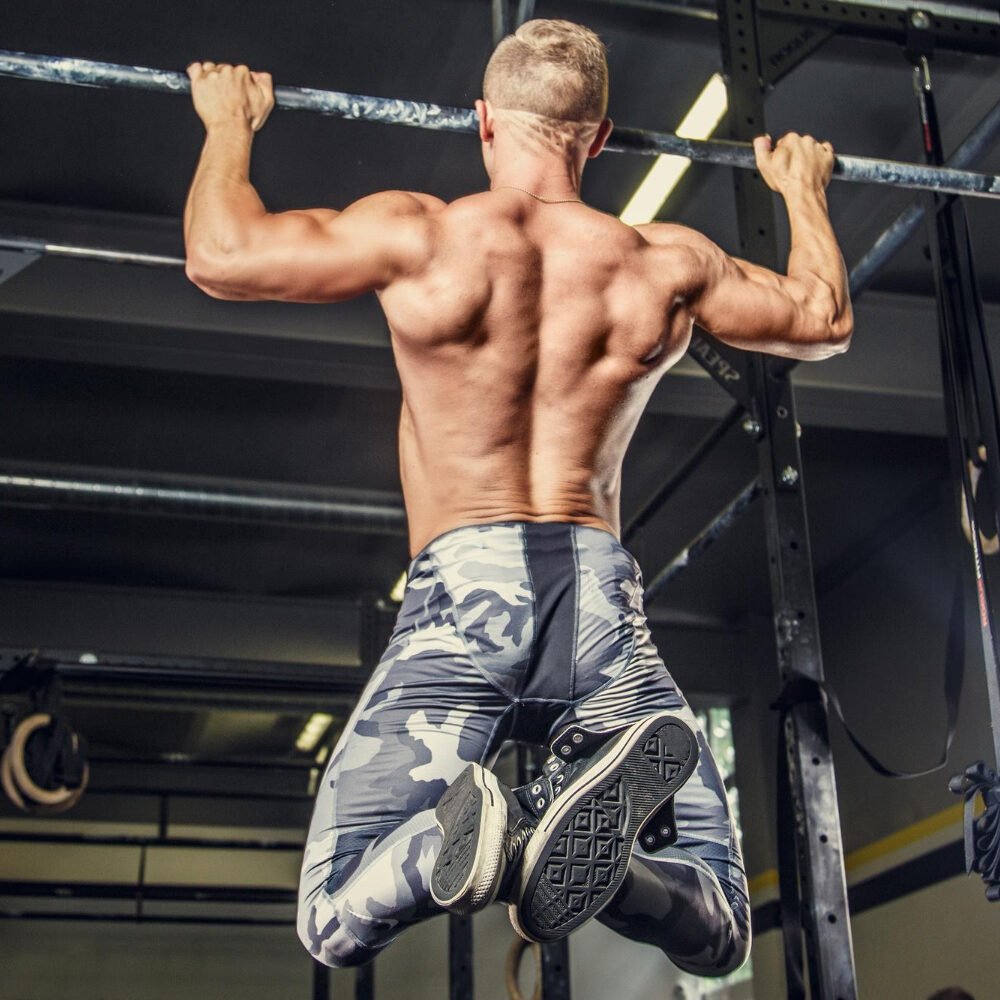
In conclusion, these 10 effective vertical pull exercises offer a variety of options for strengthening your back and lats. The practicality and efficiency of these strategies make them easy to implement into your workout routine.
By emphasizing proper form and technique, you can impact the strength and stability of your back muscles. As you embark on this journey, remember that consistency is key in achieving your fitness goals.
Keep pushing forward and strive for progress with each workout session!
FAQs
1. Why are vertical pull exercises important for my back and lats?
Vertical pull exercises strengthen your back muscles, improve shoulder joints health, and enhance the function of your upper arm by involving muscle groups like rear deltoids and latissimus dorsi during each contraction.
2. What’s a basic exercise I can start with to target my back and lats?
Pullups are an excellent starting point; grab a pullup bar with both hands, hang with extended arms, then pull yourself up until your chin is over the bar before lowering down again to complete one rep.
3. Can I still do vertical pulls if I don’t have access to a gym or equipment?
Certainly! Bodyweight movements such as chin-ups require nothing more than a sturdy overhead anchor point like a tree branch or playground equipment – just make sure whatever you choose is safe and secure.
4. How does proper form affect my vertical pulling workouts?
Maintaining correct form means keeping your elbows in line with your body and avoiding swinging motions, which helps target biceps muscles effectively while reducing strain on elbow joints.
5. Are there variations of pull-ups that can increase muscle-building benefits?
Yes! Try different grips like supination (palms facing you) for chin-ups or externally rotated grips to activate various muscle fibers—each adjustment hits the muscles at unique angles for comprehensive development.
6. What other types of exercises complement vertical pulls for balanced upper-body strength?
Incorporate horizontal pulls such as rows using barbells or kettlebells into your routine; these motions work posterior deltoids differently from vertical pulls and help prevent imbalances in shoulder strength.

Author
Years ago, the spark of my life’s passion ignited in my mind the moment I stepped into the local gym for the first time. The inaugural bead of perspiration, the initial endeavor, the very first surge of endorphins, and a sense of pride that washed over me post-workout marked the beginning of my deep-seated interest in strength sports, fitness, and sports nutrition. This very curiosity blossomed rapidly into a profound fascination, propelling me to earn a Master’s degree in Physical Education from the Academy of Physical Education in Krakow, followed by a Sports Manager diploma from the Jagiellonian University. My journey of growth led me to gain more specialized qualifications, such as being a certified personal trainer with a focus on sports dietetics, a lifeguard, and an instructor for wellness and corrective gymnastics. Theoretical knowledge paired seamlessly with practical experience, reinforcing my belief that the transformation of individuals under my guidance was also a reflection of my personal growth. This belief holds true even today. Each day, I strive to push the boundaries and explore new realms. These realms gently elevate me to greater heights. The unique combination of passion for my field and the continuous quest for growth fuels my drive to break new ground.

